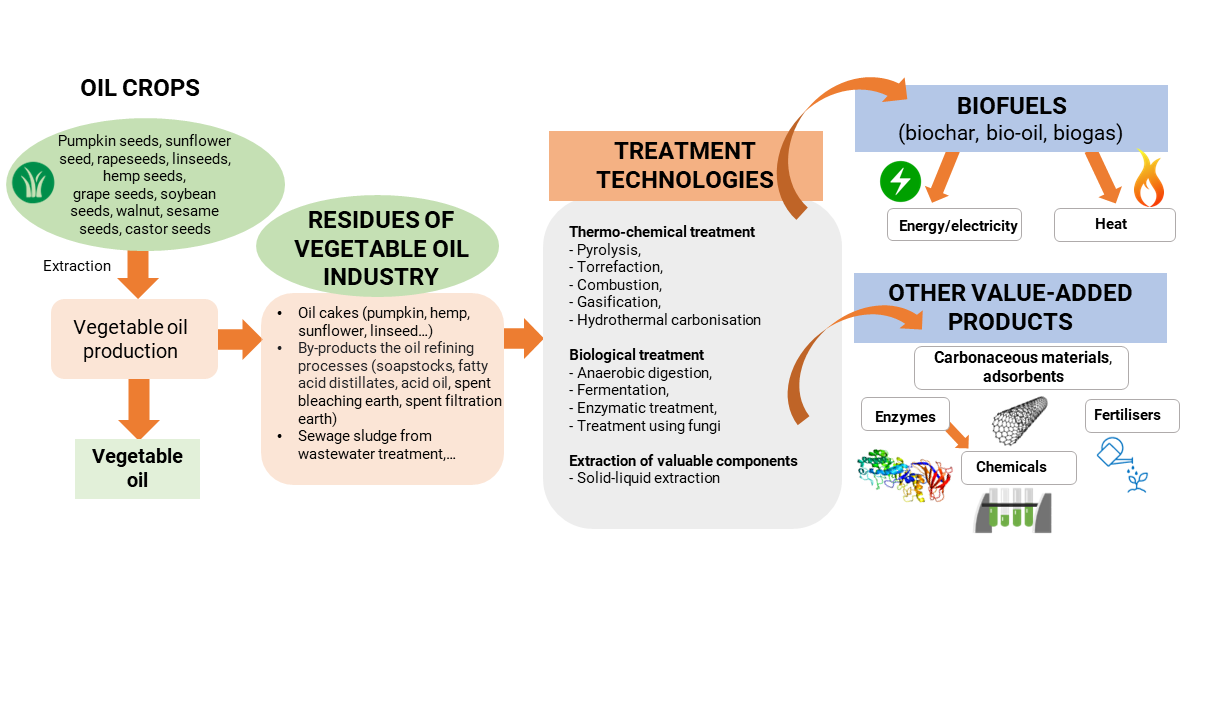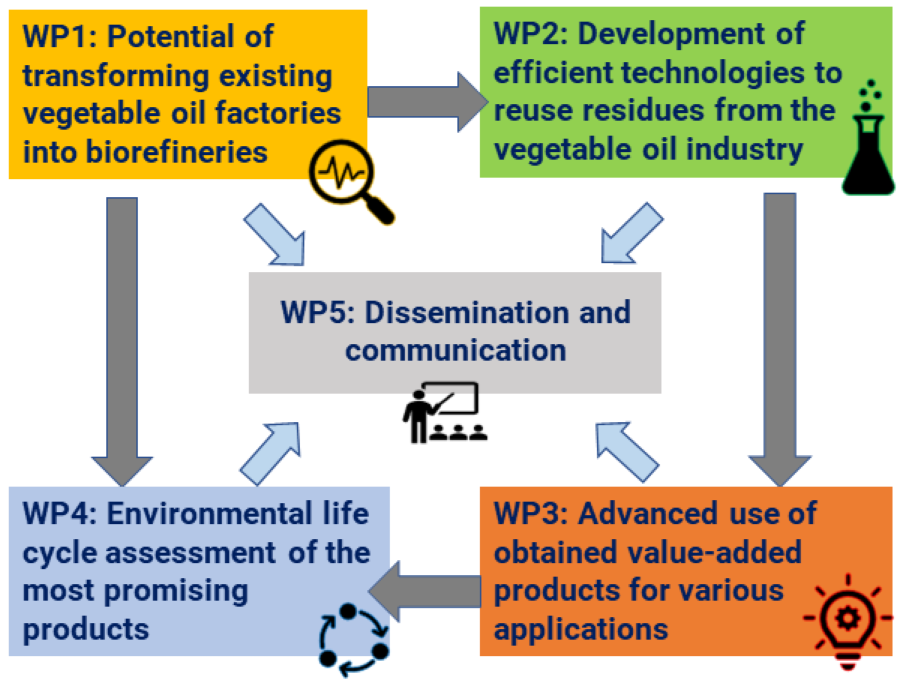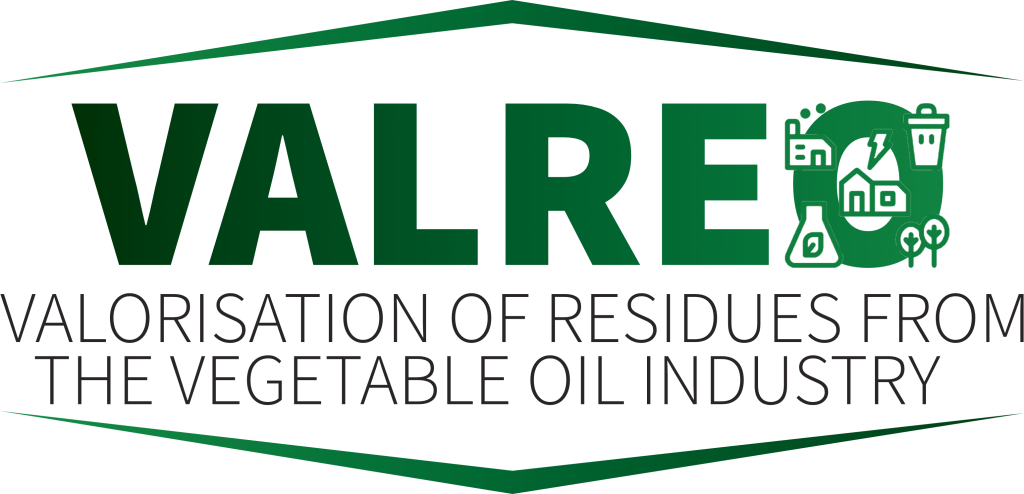VALREO
Valorisation of residues from the vegetable oil industry based on a biorefinery approach
In order to achieve the global Sustainable Development Goals of the United Nations, it is necessary to increase resource efficiency while reducing the climate impact of waste. This project explores the possibility of transforming existing vegetable oil industries (VOI) into biorefineries by converting process residues into new value-added products and energy while creating circularity in the life cycle of resources.
Project motivation
The motivation for this research lies in the fact that the EU’s vegetable oil industry (VOI) produced approximately 16 million metric tons of oils in 2022, which is expected to increase to 17.5 million metric tons by 2031. During oil production and refining, various process residues are produced, such as oil seed cakes (OC), spent bleaching earth (SBE), soapstocks, fatty acid distillates, and acid oil. Those materials are mostly unutilised.


Project Overview
VALREO aims to transform the vegetable oil industry (VOI) into sustainable biorefineries. This initiative seeks to increase resource efficiency and reduce climate impacts by converting process residues into valuable products and energy. Through innovative research, VALREO strives to contribute to the global Sustainable Development Goals by promoting circularity in resource lifecycles.
Objectives
Research Approach
Mapping and Data Collection
Gathering information on residue types, quantities, and current management practices within the VOI across Europe.
Technology Development
Exploring advanced thermo-chemical and fungal-based biological methods for residue conversion, including hydrothermal treatment and the use of fungi for biological decomposition.
Product Application and Testing
Assessing the practical applications of produced materials, such as their use in adsorption, catalysis, and agriculture, and evaluating their environmental impact.

Expected Outcomes
VALREO aims to produce a range of products from VOI residues, including hydrochars, volatile fatty acids, bioactive components, and enzymes. These products will be tested for various applications to close the loop in resource use. The project will conclude with a life cycle assessment to quantify the environmental benefits of the developed technologies.
